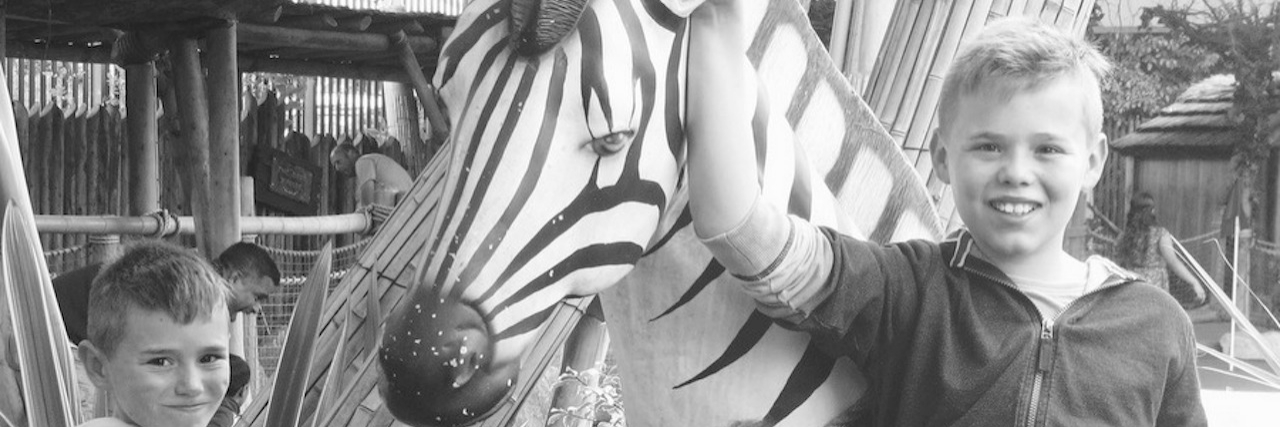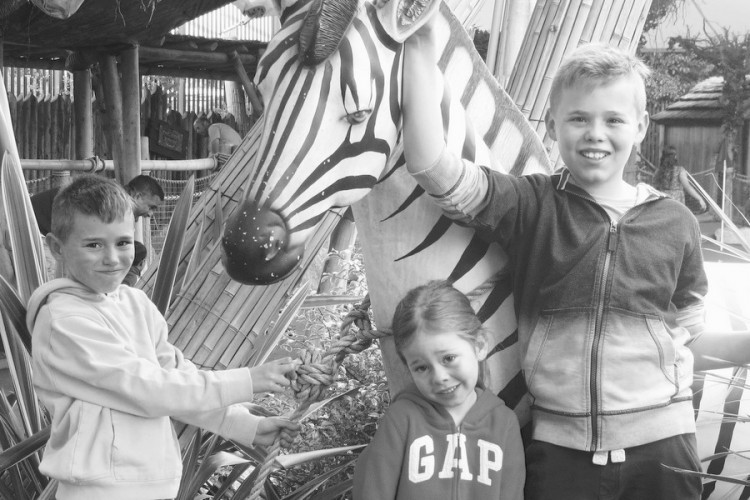5 Tips for Medical Professionals Caring for My Children With Rare Illnesses
Doctors are taught, “When you hear the sound of hooves, think horses, not zebras.” In medicine, the term “zebra” is used in reference to a rare disease or condition. Doctors are taught to assume the simplest explanation is usually correct to avoid patients being misdiagnosed with rare illnesses. Doctors learn to expect common conditions. But it seems some medical professionals can forget that “zebras” do exist, and so getting a diagnosis and treatment can be more difficult for people with rare conditions.
Ehlers-Danlos syndrome (EDS) is considered a rare condition, and so EDS sufferers are known as medical zebras. This identity has now been adopted across the world through social media to help bring our community together. Charcot-Marie-Tooth disease (CMT) and postural orthostatic tachycardia syndrome (POTS) are also on the list of rare diseases.
With all three rare diseases in my family, we like to think of ourselves as a weird cross species of the zebra: a “zonkey,” which is a zebra crossed with a donkey and even rarer than a zebra. Or a “wonkey donkey” as my children call it.
I did an informal poll of EDS and CMT communities on social media and asked them what would be the one thing they would say if they had the opportunity talk to a group of medical professionals. As I read the responses, I realized all the issues people raised also had relevance to my life and my children.
So with input from communities on social media, here are the five things I want medical professionals to know when they are dealing with my zebras (in reverse order):
5. We are already “rare,” but don’t discount us from having another rare condition.
This came from the community, and it’s so true. We have three rare conditions in our family alone. Don’t discount the fact there could be other things going on.
My CMT diagnosis took 26 years. I always had symptoms to some extent. My feet even shrunk two and a half sizes due to the neuropathy in my teens. After I was diagnosed with CMT, no one bothered testing me for another illness even though my other symptoms were obviously not related to CMT at all. My doctors would say, “Oh, that must be your CMT.”
I was eventually diagnosed with EDS diagnosis, too, after I was hospitalized and was unable to walk. I have also been told I have autonomic dysfunction, but an official diagnosis with testing is still a work in progress. Just because we may not have managed to get a name for some of our symptoms, it doesn’t take away the fact that we live with those symptoms daily.
4. The pain is real.
Don’t judge what you can’t see. It’s even more important to appreciate this when dealing with children since describing pain can be tricky for them. It can even be hard for adults.
My 4-year-old daughter describes her pain as “normal hurt” or “other hurt,” which means she is accepting a level of pain as normal. She often discounts this when answering questions about her pain either to me or medical professionals. Just because they’re not moaning and groaning all the time doesn’t mean the pain isn’t there. It means they have learned to be happy despite the pain they live with every day.
3. Don’t assume something isn’t there because you can’t see it or prove it.
EDS doesn’t show up x-rays or scans. Before I was diagnosed with EDS, I had a lot of pain in my hands. The pain would flare up for a week, making it impossible to carry out simple tasks like holding a bottle to feed my baby or wash my hair.
They found nothing on MRIs, x-rays and no inflammatory markers in blood tests. In the end, I just got on with it. It took another four years to receive an EDS diagnosis to explain the chronic pain I had been living with. This has been a common theme for me all of my life.
Be careful with what you say, and please don’t ever accuse or even hint that a child is making it up or doing something to cause the symptoms he or she is experiencing. Your words can be damaging.
2. Communicate.
Communication is key. It’s really important that everyone involved in our children’s care communicates with each other. Therapists, doctors and school officials all need to communicate with each other and to parents. I know this is tricky. I understand people are busy and may think there aren’t possibly enough hours in the day for this. But please try your best to communicate because it makes such a difference for our children.
Also, communicate effectively with the child. Take the time to talk to them and explain things to them on their level.
1. Listen.
Listening was the top issue flagged by the EDS and CMT communities. We wait a long time for appointments and don’t have the time or energy to repeat it to another doctor. So please listen to what the patient wants to gain from an appointment.
Please don’t assume you’ll know the answer to a question you have heard before. We’re all different and will have different experiences even within the same conditions.
Our most recent appointment was with a pediatrician. She listened to us, she spoke to our son and he left the appointment feeling happy since he had a better understanding of his symptoms. We made a plan together to make things better. It makes us partners in our children’s care. With them at the center.
I often think about how my life would have been different if I had been diagnosed at an earlier age. Schooling, pain management and my career choices would have all improved. That’s what drives me to make it different for my children. So if parents and medical professionals can work together to make this better for the next generation, then it’s a job well done.
Follow this journey at My Stripy Life.


